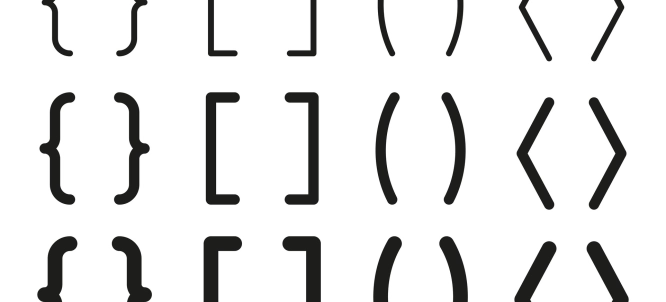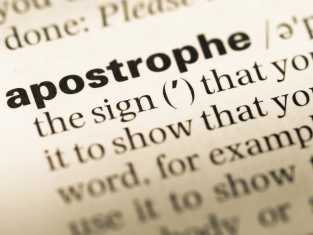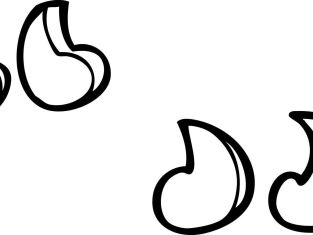by PushtoLearn
How to Use Square Brackets
Table of Contents
Journalistic, academic, and legal style guides all recommend them for insertions such as clarifications, tense changes, emphasis, or the notation sic. They also serve a few non-quotation jobs, from nesting inside parentheses to signalling editorial matter in dictionaries.
What are square brackets?
Square brackets are a pair of punctuation marks - written as [ ] - used to enclose material that is not part of the surrounding text. In American English they are usually called brackets; in British English square brackets distinguishes them from (round) parentheses.
Core uses inside quotations
1. Add or substitute words for clarity
If a quoted sentence would confuse readers without additional context, supply the missing word or replace a pronoun with its antecedent inside brackets:
“That’s what [John] believed at the time.”
Chicago, APA, and most newsroom guides all endorse this practice.
2. Change verb tense, capitalisation, or number
Minor grammatical tweaks that keep the quotation fluent - walked → walks, they → [he] - belong in brackets rather than being made silently. The intervention must be minimal; otherwise paraphrase instead of patching the quote.
3. Insert explanations, translations, or dates
Brackets can hold brief glosses or factual identifiers:
“I visited the Althing [Iceland’s parliament] in 2019.”
Scholarly works often supply first-mention dates this way - e.g., Gronley’s [1999] analysis.
4. Mark an omission or error
Use an ellipsis in brackets to show deleted words […], and [sic] to flag an error that appeared in the original.
5. Emphasise part of a quotation
Place [emphasis added] (or italics mine) after the highlighted words so readers know the stress was not in the source.

Uses outside quotations
1. Parentheses inside parentheses
If you already have material in round brackets, any second-level aside goes in square brackets:
This point (see Smith [2024] for a full discussion) is widely debated.
2. Defining abbreviations in APA Style
APA places the abbreviation in brackets after the spelt-out term the first time it appears within parentheses.
3. Dictionaries and etymologies
Merriam-Webster prints word origins in bold square brackets before the definition.
4. Technical writing and maths
In mathematics, programming, and phonetics, square brackets have domain-specific meanings (e.g., closed intervals [a, b]). These uses follow discipline conventions rather than general grammar rules.
Style-guide nuances
Common pitfalls to avoid
-
Adding opinion – Brackets must supply information, not commentary.
-
Overbracketing – Too many insertions make a quote unreadable; consider paraphrasing instead.
-
Changing meaning – Never use brackets to alter the speaker’s intent.
-
Mixing brackets and parentheses – Maintain the hierarchy: parentheses > square brackets > braces { } if ever needed.
Quick checklist
-
✔️ Insert only what readers need to understand.
-
✔️ Keep changes visible and minimal.
-
✔️ Use [sic] sparingly- only for significant errors.
-
✔️ Follow your house style (Chicago, APA, AP, etc.) consistently.
-
❌ Don’t use brackets to editorialise or to replace whole phrases better rendered as paraphrase.
FAQ
What do square brackets mean in grammar and writing?
Square brackets are punctuation marks that enclose material the current writer adds to a sentence—typically within a quotation—to clarify, translate, or note an error such as [sic].
How do I add missing words in a quotation with square brackets?
Insert the new word or phrase in brackets directly after the spot where it belongs: “She told [the committee] the truth.” Both the Chicago Manual of Style and APA 7th edition require brackets for such substitutions or additions.
Does APA Style use parentheses or square brackets for clarifications?
APA 7 specifies that clarifications inside quotations must appear in square brackets, not parentheses, and that any emphasis you add should be followed by [emphasis added] in brackets.
What’s the difference between parentheses ( ) and square brackets [ ]?
Parentheses add extra information in your own narrative, whereas square brackets modify or explain quoted text or nest inside existing parentheses. The Oxford Style Guide and Grammarly both stress this hierarchy.
Are square brackets acceptable in legal or journalistic writing?
Yes. U.S. legal citation rules (e.g., Cornell’s Basic Legal Citation) require brackets to show any change to quoted authority, while UK and AP journalism guides use them to clarify pronouns or correct tense without altering meaning.

